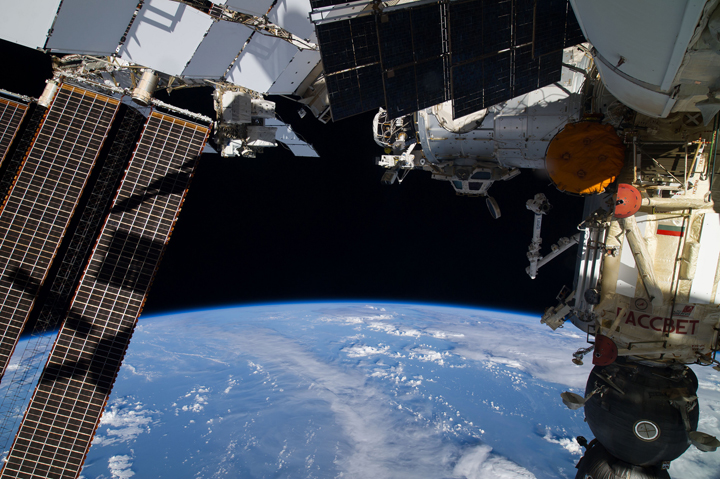As if the chance of meteors and the northern lights wasn’t enough, the night sky is also giving us another treat: the International Space Station.

The orbiting laboratory, which received a shipment of supplies and experiments Wednesday, can be spotted travelling across the sky over the next two weeks.
If you want to find out when you can see it, visit NASA’s Spot the Station website. Once you look up your city, you will see the dates, length of visibility, the maximum height the station will appear in the sky, when it appears (as well as the direction), as well as when it disappears.

Astronomers use degrees when referring to the sky. The basic rule is that one degree is roughly the width of your pinky finger at arm’s length. Five degrees is the width of your three middle fingers (index to ring) held at arm’s length. Ten degrees is approximately the width of your fist held at arm’s length. (Helpful tip: 90 degrees is straight up.)
If the information says that the space station appears 10 degrees above the horizon, you hold out your fist with the base at the horizon. From end to end, that’s 10 degrees.

Get breaking National news
READ MORE: WATCH – Comet dies as it plunges into sun
To see it, you don’t need a telescope or binoculars. Just look up.
When you’re searching, just look for a bright, slow-moving object (if the lights are blinking, it’s a plane). Sometimes the station will appear brighter than other times and that’s due to how the sun is reflecting off it. And because of that reflection, the station may dim in brightness or even disappear altogether as it passes.
So, if you get clear skies, try to head out: you could get meteors, the northern lights or the International Space Station. Or if you’re really lucky, all three in one night.


Comments